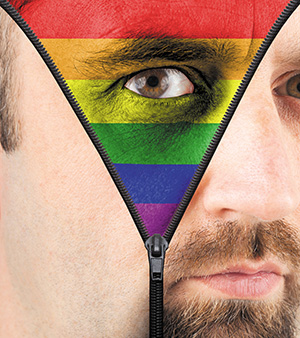I used to hate science in high school. In my class of 68 people (Wellington High School Class of 1971), our biology teacher was completely incompetent, and our physics teacher gave you extra credit if you went to the high school wrestling matches (you guessed it, he was the coach). After these crappy experiences, when I got to college, I took as little science (i.e., zero) as possible, believing that it was useless to me and that I would have been hopeless at understanding it.
What a difference a few decades make! Now, as a psychotherapist, I am really into biology, physics, anatomy, physiology, neuroscience, etc. I’m afraid I was an unknowing victim of a lousy, small-town school whose science department was worse than a joke (whatever that would be).
I just finished reading an amazing book: “My Stroke of Insight” by Dr. Jill Bolte Taylor. You may have seen her TED Talks. More than 6.1 million people have. (http://bit.ly/2kqfUrP)
According to Taylor, 90 seconds is the length of time that it takes for an emotion to run its course through your body. This sure comes as news to me. Taylor, a neuroanatomist, says that emotions only have a strong effect on us for 90 seconds. Yes, only 90 seconds! I found it hard to believe, but she says that after the first 90 seconds, we have the option to renew that emotion for another 90 seconds, or to shift away from it.
She claims that the body itself has to experience the emotion – sadness, anger, confusion – for 90 seconds. But, after the first 90 seconds, we are actually choosing to continue to suffer … and that it’s optional.
“How do you put this into practice?” I wondered. For the past few weeks, I’ve been experimenting with it. When I feel a strong emotion, I let myself feel it for 90 seconds. I can usually feel the emotion beginning to fade a bit, and then there is the moment of choice. Do I want to sign up to keep feeling this way? Or would I prefer to feel something else?
I didn’t used to think that feeling was a conscious choice, but, after reading her book and experimenting with her ideas myself, it seems to me that her neuroanatomy-based beliefs align with those of Buddhism. Namely, pain is not optional, but suffering is. Pain is that 90 seconds of unhappiness. But, after those 90 seconds, I can choose to suffer or I can choose to redirect my brain to focus on something else.
I can’t always do this, but I am getting better and better at it. I think I am learning, as Taylor writes, to shift from the left side of my brain to the right side. The left side is the linear/logical/rational side, the problem-solving side. It is also the side that is the judgment center for the brain, typically saying things like. “You screwed up again” or “Those people are total idiots.” This, of course, is painful. So this side of the brain generates my 90 seconds of unhappiness.
After that 90 seconds, I have the option (according to Dr. Taylor) to shift to the right side of my brain. The right side of my brain is more experiential, emotional and intuitive. This side of my brain is able to say things like, “I don’t really know what their motivation is” and “I wasn’t so skillful doing that, but I can be more skillful next time.” The right side of my brain is kinder and open to seeing things differently. It’s more willing to give myself and others a break, to be forgiving and to be willing to be wrong.
If you want to know more, check out her book and TED Talks. Meanwhile, I’m still experimenting with my 90 seconds of unpleasant emotion. It’s definitely getting easier to shift out of it than it used to be. You might give it a chance and see if it works for you.
After all, 90 seconds of unhappiness isn’t too bad.
As long as we don’t keep it going.
— Michael Kimmel is a licensed psychotherapist who specializes in helping LGBT clients achieve their goals and deal with anxiety, depression, grief, sexually addictive behavior, coming out, relationship challenges and homophobia. Contact him at 619-955-3311 or visit lifebeyondtherapy.com.
Graphic by www.CanStockPhoto.com.









